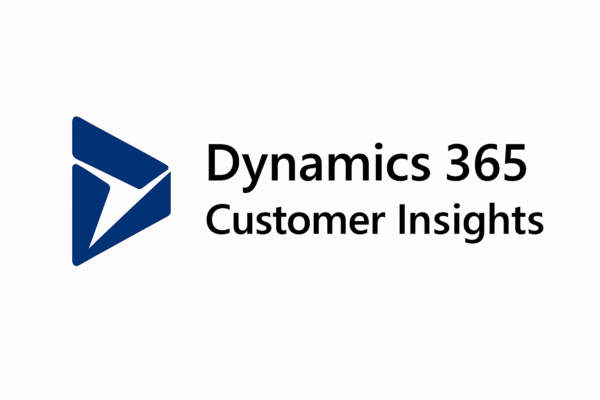Choosing the Best ERP for the Jewelry Industry: Cloud vs On-Premises
Enterprise Resource Planning (ERP) has become vital for jewelry businesses seeking growth, agility, and flawless operational management. As the industry navigates highly specific challenges—such as precious metal inventory tracking, custom design management, fluctuating valuation, and compliance—the right ERP system makes all the difference. Today, the decision often boils down to two primary options: Cloud-based ERP or On-Premises ERP.
Understanding ERP: Tailored for Jewelry
Jewelry ERP software is designed to streamline every facet of the business. It brings together inventory, sales, manufacturing, accounting, compliance, and customer relationship management in one platform. Essential features include:
-
Real-time inventory & SKU tracking
-
Order management & billing
-
POS integration
-
Production workflow
-
CRM and e-commerce management
-
Comprehensive reporting and analytics
These features are critical whether you’re a retailer, wholesaler, manufacturer, or a hybrid jewelry business.
Cloud-Based ERP: Agility and Accessibility
Cloud ERP hosts all data and processes online and is managed by your software provider. You access your system via a browser or mobile app, with no need to manage physical servers or IT staff onsite.
Key Benefits:
-
Lower Upfront Costs: Typically operates on a subscription-based model, drastically reducing the initial investment. Fees cover software, server usage, maintenance, and upgrades.
-
Scalability: Easily add users, features, or locations without infrastructure changes—ideal for multi-store chains, rapidly growing retailers, or seasonal fluctuations.
-
Mobility: Access data, run dashboards, and manage operations from any internet-connected device—perfect for remote teams or multi-location jewelry businesses.
-
Automatic Updates: New features, security patches, and integrations are handled seamlessly by the vendor.
-
Disaster Recovery & Uptime: Data redundancy ensures high availability, robust backups, and quick disaster recovery with minimal disruption.
-
Integration-Friendly: Most cloud ERPs offer smooth integration with e-commerce platforms, accounting, and marketing tools.
Considerations:
-
Ongoing Cost: Monthly or annual subscriptions can add up over time, especially with user expansion.
-
Data Security: While reputable vendors offer strong security, your business data is managed outside your premises. Evaluate vendor protocols and compliance standards.
-
Dependence on Internet: Reliable internet connectivity is essential for uninterrupted access.
Best For: Small to medium-sized jewelry businesses, dynamic organizations with frequent changes, multi-location retailers, and those seeking global expansion.
On-Premises ERP: Control and Customization
On-Premises ERP requires purchasing software licenses and installing everything on your own servers. Your IT team manages security, customization, upgrades, and hardware.
Key Benefits:
-
Data Control: All sensitive business data remains within your company-controlled servers, offering more peace of mind to some organizations.
-
Customization: Greater flexibility and autonomy with custom workflows, detailed reports, and system integrations tailored specifically for your business and regulatory requirements.
-
No Recurring Software Fees: Pay significant upfront costs for hardware and software but avoid ongoing vendor subscription fees.
Considerations:
-
High Upfront Costs: Substantial investment in hardware, software, and IT staff; best suited for larger enterprises that can capitalize these costs.
-
Limited Mobility: Access is generally restricted to the physical location or secure VPN, limiting remote operations or mobile management.
-
Manual Upgrades: Your team must handle updates, patches, and security protocols—introducing complexities and possible delays in adopting new features.
-
Scalability Challenges: Expanding locations or users often means investing in additional hardware and complex installations.
Best For: Large jewelry enterprises prioritizing full data control, highly custom operations, or with specific compliance demands.
Key Decision Factors
| Feature | Cloud-Based ERP | On-Premises ERP |
|---|---|---|
| Initial Cost | Low (subscription) | High (hardware, license, setup) |
| Ongoing Cost | Subscription-based | Maintenance, IT salary, upgrades |
| Scalability | Highly scalable, instant expansion | Hardware dependent, slow |
| Mobility | Remote, multi-device access | Onsite or VPN reliant |
| Data Control | Vendor-managed, strict protocols | Full company control |
| Updates | Automatic, vendor-handled | Manual, IT-dependent |
| Customization | Limited, vendor-driven | High, company-driven |
| Disaster Recovery | Vendor-provided, robust redundancy | Company-managed |
| Implementation Speed | Quick | Slower, multi-phase |
Trends and Best Practices
-
Most jewelry businesses worldwide are moving toward cloud-based ERP for simplicity, cost-efficiency, and future-readiness.
-
Cloud solutions allow rapid adoption of new technologies, integration across platforms, and seamless multi-store scalability.
-
On-premises ERPs remain relevant for businesses with special data sovereignty needs, strict compliance, or heavy customization.
-
In hybrid models, companies use on-premises ERP for core operations and cloud modules for customer-focused functions like CRM or remote sales.
Making Your Choice: Steps for Jewelry Businesses
-
Assess Your Business Needs: What unique challenges (multi-location, design customization, gold rate tracking, compliance) do you face?
-
Evaluate Costs and ROI: Calculate both upfront and ongoing costs against long-term business strategy.
-
Map Scalability Requirements: Consider current size and future growth.
-
Review Security and Compliance: Match vendor protocols with your requirements.
-
Explore Customization Needs: Ensure your ERP supports workflows unique to jewelry retail, wholesale, or manufacturing.
-
Test Integration: Check for compatibility with e-commerce, accounting, and marketing platforms.
Final Thoughts
The right ERP system isn’t just about software—it’s about strategic transformation. Cloud-based ERP is redefining jewelry business management, offering agility, real-time insight, and lower barriers to entry. On-premises ERP still holds value for businesses demanding full control and high customization.
If you’re aiming for global scalability, seamless integration, and future-proof operations, cloud-based solutions—like those offered by Zerone HiTech and their JEM platform—deliver unmatched advantages. For those with specific compliance or legacy infrastructure needs, on-premises may remain preferable.
Ready to transform your jewelry business? Connect with Zerone HiTech to discover which ERP approach suits your growth ambitions, operational challenges, and digital future. Our expertise ensures your investment in ERP drives true business transformation worldwide.




